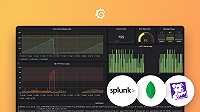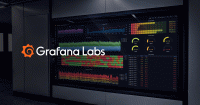Sift analysis - Log query
This analysis runs a custom Loki query configured by the user and uses the result to populate a configurable template.
Inputs
Required:
- none
Optional:
- Custom filters
How it works
Step 1: Process query
Interpolates the user’s query using the investigation labels:
{namespace=”$namespace”, cluster=”$cluster”} |= “error in database”becomes{namespace=”machine-learning”, cluster=”dev-us-central-0”} |= “error in database”
Step 2: Execute query
Executes the query against the discovered Loki datasource.
Step 3: Process results
Interpolates the template message using the result of the query.
For example, this template
I found something interesting!
Expr: {{ .expr }}
Matching streams:
{{ range .streams -}}
- Labels: {{ .Labels }}
Logs:
{{- range .Entries }}
{{ .Timestamp }} - {{ .Line }}
{{- end }}
{{ end -}}becomes this result
I found something interesting!
Expr: {cluster="dev-us-central-0", namespace="machine-learning"} |= "error in database"
Matching streams:
- Labels: {cluster="dev-us-central-0", namespace="machine-learning", pod="some-pod"}
Logs:
2023-01-01 00:00:00 +0000 UTC - message 0
2023-01-01 00:00:01 +0000 UTC - message 1
2023-01-01 00:00:02 +0000 UTC - message 2
- Labels: {cluster="dev-us-central-0", namespace="machine-learning", pod="some-other-pod"}
Logs:
2023-01-01 00:00:00 +0000 UTC - message 0
2023-01-01 00:00:01 +0000 UTC - message 1
2023-01-01 00:00:02 +0000 UTC - message 2What resources does this analysis use?
- Loki datasource
How does this analysis determine when a result is interesting?
- If at least one log stream is returned by the query, the check is considered interesting.
What configurations options are available for this analysis?
Query
The custom LogQL query expression to run.
Message template
A Go template string used to format the output of the check.
The template string has access to the following variables:
expr: the input expression stringinteresting: a boolean indicating whether this check found any interesting resultsstreams: an array of log streams. Each element has two fields:Labels, a map from label name to label value identifying the streamEntries, an array of log entries. Each element has two fields:Timestamp, the timestamp of the log entry.Line, the log line itself.
Max log lines
The maximum log lines to include for each stream in the output.
- Default: 5
- Minimum: 1



